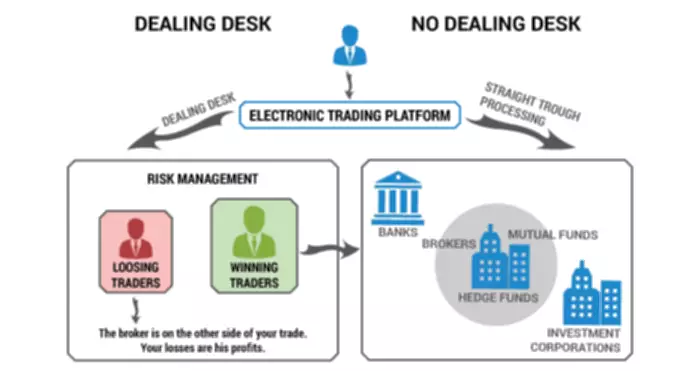Learn all about the falling wedge pattern and rising wedge pattern here, including how to spot them, how to trade them and more. The falling wedge pattern (also known as the descending wedge) is a useful pattern that signals future bullish momentum. This article provides a technical approach to trading the falling wedge, using forex and gold examples, and highlights key points to keep in mind when trading this pattern. A rising wedge is a technical pattern, suggesting a reversal in the trend . This pattern shows up in charts when the price moves upward with higher highs and lower lows converging toward a single point known as the apex.

Trading stocks, options, futures and forex involves speculation, and the risk of loss can be substantial. Clients must consider all relevant risk factors, including their own personal financial situation, before trading. Trading foreign exchange on margin carries a high level of risk, as well as its own unique risk factors. Wedges can offer an invaluable early warning sign of a price reversal or continuation.
⏮️previous Analysis
🍻Hard for everyone but easy for me. thanks God… _ _ _ _ _ _ _ _ _ _ _ _ _ _ _ _ _ _ _ _ _ _ _ _ _ _ _ _ _ _ _ _ _
✅Thank you, and for more ideas,… Learning new concepts about trading approaches and the stock market is critical to your success as a trader. Low float stocks are a type of stock with a limited number of shares available for trading, which tends to cause… Whether you’re a seasoned trader or just getting started, mastering your day trading psychology can help you achieve your objectives.
Wedge Strategy – Where should you place your stop loss?
Prices usually decline after breaking through the lower boundary line. As far as volumes are concerned, they keep on declining with each new price advance or wave up, indicating that the demand is weakening at the higher price level. A rising wedge is more reliable when found in a bearish market.

It’s important to note a difference between a descending channel and falling wedge. In a channel, the price action creates a series of the lower highs and lower lows while in the descending wedge we have the lower highs as well but the lows are printed at higher prices. For this reason, we have two trend lines that are not running in parallel.
Once prices move out of the specific boundary lines of a falling wedge, they are more likely to move sideways and saucer-out before they resume the basic trend. We want to clarify that IG International does not have an official Line account at this time. We have not established any official presence on Line messaging platform. Therefore, any accounts claiming to represent IG International on Line are unauthorized and should be considered as fake. 71% of retail client accounts lose money when trading CFDs, with this investment provider.
How to practice rising and falling wedge patterns
As with their counterpart, the falling wedge may seem counterintuitive. They push traders to consider a falling market as a sign of a coming bullish move. But in this what is a falling wedge pattern case, it’s important to note that the downward moves are getting shorter and shorter. This is an indication that bullish opinion is either forming or reforming.

A good take profit could be somewhere around the 38.2% or 50% Fibonacci levels. In a rising wedge, both boundary lines slant up from left to right. Although both lines point in the same direction, the lower line rises at a steeper angle than the upper one.
Maximizing Profits While Minimizing Risk in Day Trading
Hello dear traders,
Here are some educational chart patterns you must know in 2022 and 2025. I hope you find this information educational and informative. We are new here so we ask you to support our views with your likes and comments,
Feel free to ask any questions in the comments, and we’ll try to answer them all, folks. Usually, a rising wedge pattern is bearish, indicating that a stock that has been on the rise is on the verge of having a breakout reversal, and therefore likely to slide.
Here is another example of a falling wedge pattern but this time it formed during a corrective phase in Gold which signaled a potential trend continuation once the pattern completed. In the Gold chart below, it is clear to see that price breaks out of the descending wedge to the upside only to return back down. This is a fake breakout or “fakeout” and is a reality in the financial markets. The fakeout scenario underscores the importance of placing stops in the right place – allowing some breathing room before the trade is potentially closed out. Traders can place a stop below the lowest traded price in the wedge or even below the wedge itself. The most common reversal pattern is the rising and falling wedge, which typically occurs at the end of a trend.
Traders can look to the starting point of the descending wedge pattern and measure the vertical distance between support and resistance. Then, superimpose that same distance ahead of the current price but only once there has been a breakout. A falling wedge pattern is seen as a bullish signal as it reflects that a sliding price is starting to lose momentum, and that buyers are starting to move in to slow down the fall. The reversal is either bearish or bullish, depending on how the trend lines converge, what the trading volume is, and whether the wedge is falling or rising. Exciting developments are unfolding in the world of crypto, and NEAR Protocol (NEAR) has caught our attention.
- It involves recognizing lower highs and lower lows while a security is in a downtrend.
- Trading stocks, options, futures and forex involves speculation, and the risk of loss can be substantial.
- Note that the example above also shows a decline in the MACD-Histogram’s peaks before the patter ends.
- When the falling wedge breakout indeed occurs, there’s a buying opportunity and a sign of a potential trend reversal.
- However, rising wedges can occasionally form in the middle of a strong bearish trend, in which case they are running counter to the main price movement.
It is a bullish pattern that starts wide at the top and contracts as prices move lower. This price action forms a cone that slopes down as the reaction highs and reaction lows converge. In contrast to symmetrical triangles, which have no definitive slope and no bias, falling wedges slope down and have a bullish bias. However, this bullish bias cannot be realized until a resistance breakout occurs.
Conversely, the two ascending wedge patterns develop after a price increase as well. For this reason, they represent the exhaustion of the previous bullish move. https://www.xcritical.in/ After the two increases, the tops of the two rising wedge patterns look like a trend slowdown. Hence, they are bearish wedge patterns in the short-term context.
Strategies to trade wedge patterns
It may take you some time to identify a falling wedge that fulfills all three elements. For this reason, you might want to consider using the latest MetaTrader 5 trading platform, which you can access here. Price typically breakout in the direction of the prevailing… Price keeps bouncing of it and at the same time forming a falling wedge.
You could sustain a loss of some or all of your initial investment and should not invest money that you cannot afford to lose. To design a wedge trading strategy, you need to determine when to open your position, when to take profit and when to cut your losses. As the price continues to slide and lose momentum, buyers begin to step in and slow the rate of decline.
You can place a stop-loss above the previous support level, and if that support fails to turn into a new level of resistance, you can close your trade. When a stock or index price move has fallen over time, it can create a wedge pattern as the chart begins to converge on the way down. Traders can look to the beginning of the descending wedge pattern and measure the peak to trough distance between support and resistance to spot the pattern. The falling wedge pattern is seen as both a bullish continuation and bullish reversal pattern which gives rise to some confusion in the identification of the pattern. Both scenarios contain different market conditions that must be taken into consideration. They can offer an invaluable early warning sign of a price reversal or continuation.

